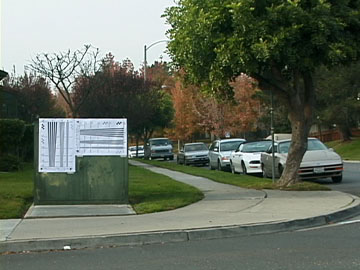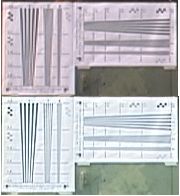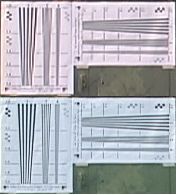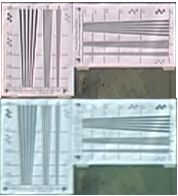by John Beale 3 pm, Sat. Dec. 18 1999


The image above is from the TRV900 at f/5.6, with a correct aspect ratio (upsampled to 720x540, then cut 50% to 360x270) and increased contrast for better viewing on a computer monitor.
I took the images in the table below on a mostly overcast winter day in
Fremont CA. Each camera was mounted in turn on a tripod 52 feet (16 m) from
the resolution patterns. The zoom was set such that the camera's total
field of view at that distance is 22 x 16 feet (6.6 x 4.9 m), or 23.7 x
17.5 degrees (horizontally x vertically). This is the same view as a 35mm
SLR camera with a 86 mm focal length lens. The resolution patterns are
taped to a transformer box near the sidewalk. The length of each
resolution pattern wedge is 32 inches. I made this pattern myself (download
it here),
printed on a 8.5x11 sheet, and enlarged it 350% at a copy center. Click on
any of the four boxes below to see the full frames from both cameras (raw
720x480 firewire transfer, with headers added and converted to JPEG at
Quality=80 in ThumbsPlus 4.0). Because the pixels on your computer monitor
are square, the raw firewire image appears stretched horizontally by a
factor of 1.125 from the correct ratio.

|

|

|

|
The upper image is from the GL1 and the lower from the TRV900. Both cameras were in normal scan, interlaced video mode, autofocus, auto-color balance mode. GL1 color and sharpness were at default (center). It is not so obvious viewing the full image, especially on its own, but looking at the nominally white paper side-by-side makes the color bias of the two cameras clear. The f/11 shot I mistakenly overexposed on the TRV900; otherwise it would have the bluish/cyan tinge as well. It is interesting to note that the GL1 shots sometimes seem sharper, and yet they show spatial frequency aliasing on the vertical resolution wedges sooner than the TRV900 does. Each resolution wedge has five lines; near the bottom the GL1 rendition shows only four, or three. I think the "true" resolution of the TRV900 is higher except for the rightmost case where the TRV900 lens is wide open (f/1.6) and quite blurry.
You will observe in the full-screen images that the GL1 does not use all 720 horizontal pixels of the DV standard; mine has 708 active pixels. (Note, there is not a 1-to-1 mapping between DV signal pixels and CCD pixels.) The TRV900 does show all 720 pixels. The colors seem washed out on some of the TRV900; I did not use a ND filter on the rightmost two (f/2.8, f/1.8) and that might have improved them. The colors on the video monitor look more saturated than on the computer screen in both GL1 and TRV900 cases. The GL1 has an internal 4.5 stop ND filter, which is much stronger than the TRV900's 2.5 stop ND filter.
I simply adjusted the cameras for approximately correct exposure, and
then matched up selected frames afterwards comparing the data read-out
on the tape, so the cameras lens settings are 1/2 stop off from matching.
Certainly a more careful experiment could be done, although I think I've
satisfied my curiosity for today.